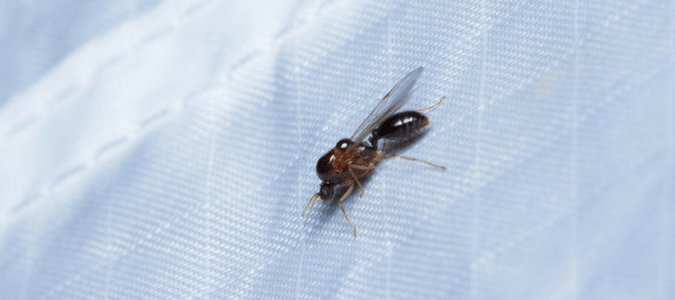
According to the National Pest Management Association, termites cause more than five billion dollars worth of property damage each year in the United States alone. The most destructive type of termite, the subterranean species, feeds 24 hours a day, so this dangerous pest doesn’t ever take a vacation. Homeowners can protect their biggest investment by learning more about bugs that look like termites but aren’t.
Most of us can distinguish between the most common bugs and insects we see in and around our home. Roaches, mosquitoes and flies look quite different from each other. But when it comes to other insects, our knowledge is fuzzy, at best.
Different pests require different types of treatment. Let’s explore what insects resemble termites and how to tell these bugs apart so that you can keep these pests away from your property.
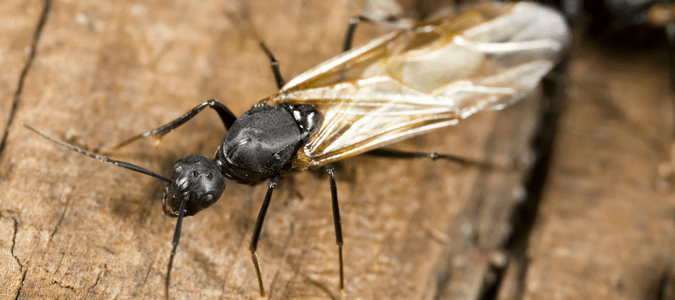
Carpenter Ants
The bug which is most commonly confused with a termite is an ant. Both termites and ants live in colonies. These social insects excavate wood, although termites feed on wood, while ants tunnel into wood to make a home. Among the ant species, the type which most closely resembles a termite is the carpenter ant.
Carpenter ant workers are wingless, between a quarter and a half inch long and are dark brown or black in color. Reproductive ants have two sets of wings and can be up to three-quarters of an inch long. The front wings are longer than the hind wings and are not similar in shape, pattern or size. The carpenter ant has a defined “waist” with elbowed antennae.
Subterranean termite workers, on the other hand, are wingless, sport a beige color and are smaller than carpenter ant workers, measuring between an eighth and a quarter of an inch. “Swarmers”—the name for reproductive termites—are the same color as carpenter ants, with two sets of wings. A winged carpenter ant, pictured above, resembles winged termites when you aren’t quite sure how to distinguish the two species. Swarmers, which are up to a half-inch in length, are most active during the early springtime. Unlike ants, termite wings are about the same length with many small veins. When termite wings detach, small stubs remain, whereas ants completely shed their wings. Also, termites do not have a defined waist, and have straight antennae.
We can sometimes find carpenter ants inside as they search for food, whereas we are unlikely to see termites indoors, since they live most of their lives underground. If you do see a swarmer inside, you may have an infestation on your hands.
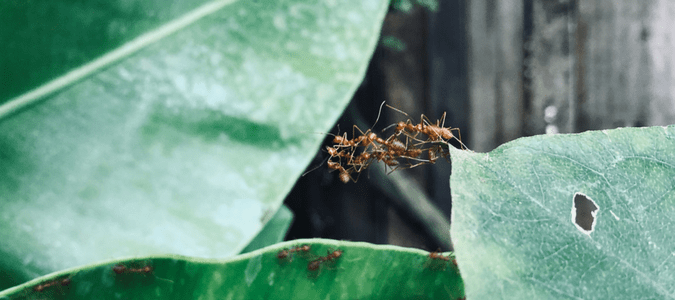
Acrobat Ants
Acrobat ants share many similarities with carpenter ants. Similar to the carpenter ant, they have a segmented body, unlike a termite. This light brown or black ant species makes its home in wood. Acrobat ants are generally one-eighth of an inch in length, with the exception of the queen, which is up to three-eighths of an inch long.
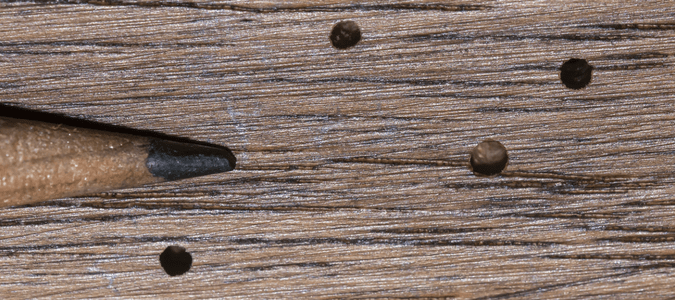
Powderpost Beetles
It’s not just ants that are mistaken at times for termites. Powderpost beetles also damage wood by turning it into a fine powder, so homeowners often assume damage left behind by powderpost beetles is termite-related. Larvae are to blame for this damage as they create narrow tunnels inside of the wood. One to five years later, adults emerge via exit holes on the wood’s surface.
Since the adult powderpost beetle is most active at night and this stage of its life cycle is short, the best indication of a problem is the dust-like residue the beetle larvae leave behind. Subterranean termites are also rarely seen, since these pests live underground. What you are more likely to see than the termite is the waste products it leaves behind. Termite frass is more pellet-like with ridges than the beetle’s powdery dust.
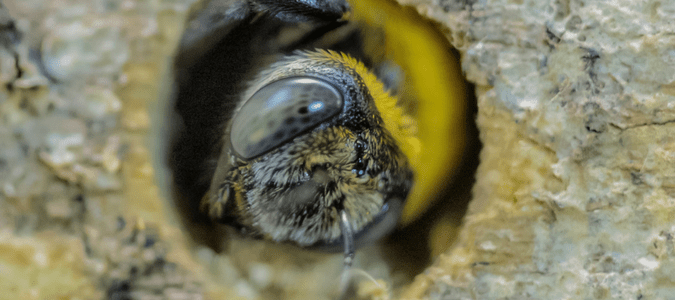
Carpenter Bees
Similar to carpenter ants, carpenter bees tunnel inside of wood to make their home. The damage carpenter bees inflict on decks and other wooden structures is more cosmetic than structural in nature. Over time, these insects can create intricate galleries in your wood, and similar to other bees, females can bite if threatened. Carpenter bees bear little resemblance to termites. The best comparison is to the bumblebee, since they are big and round. However, carpenter bees don’t have the bumblebee’s characteristic stripes.
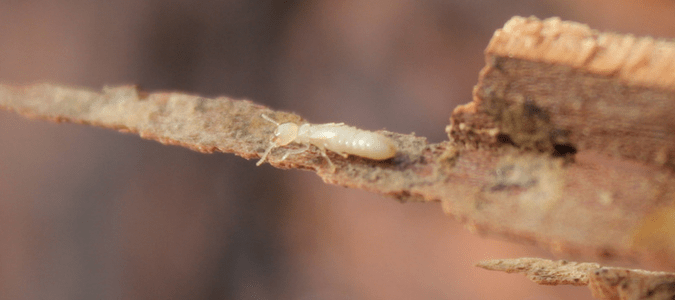
Signs You Have Termites
Termites aren’t fond of light, so you might not see them out during the day, unless they’re swarming. If you do have termites, you’ll find other signs of an infestation. Look for small piles of sawdust or discarded wings around your home. Check your foundation for mud-colored “shelter tubes.” Termites also leave behind small piles of feces that look like dust or dirt. You can also inspect for damaged wood around your home’s exterior, which you can usually identify if you lightly tap an area with a flat-headed screwdriver and detect a hollow spot.
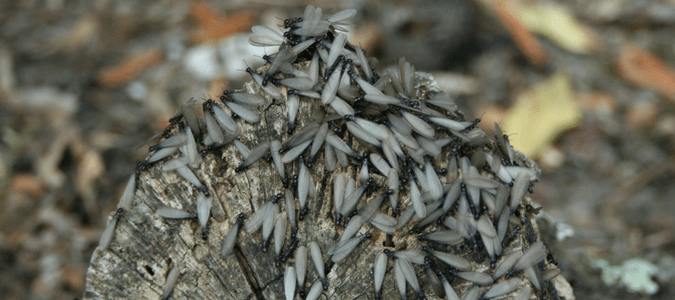
What To Do If You Have Termites
Unfortunately, one of the reasons termite damage can be so severe is that these pests often go undetected for long periods of time. In addition, the types of termites we are more likely to see are the swarmers, pictured above, which look different than the other termite types because they have wings. Because termite colonies can have more than a million members, you don’t want to put off treatment for long. Considering your home is your largest investment and termite control requires specialized equipment, it’s best to seek out the help of a professional to confirm the presence of termites and recommend the best next steps.
ABC Can Protect You From Pest Damage
Whether you have termites, ants or any other wood-dwelling pest, ABC Home & Commercial Services is equipped to handle the problem. Contact us today for a free inspection to identify the cause of your pest damage, assess the extent of the infestation and develop a targeted plan to eradicate the invaders.
